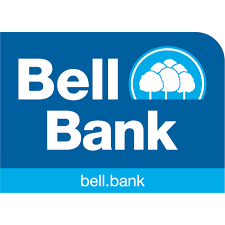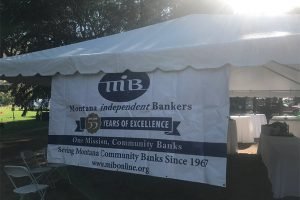Community banks have unique access to equipment leasing opportunities, but many are not taking advantage of – and profiting from – them.
As with any industry, leasing has had various periods and levels of annual growth. Our nation’s capital investment growth rate, customer liquidity levels, bank liquidity levels, and the current flavor of tax legislation and accounting rules all influence leasing activity. However, the equipment leasing market is large, growing and serves a crucial role in providing capital for businesses.
Many businesses, many of which may be your current customers, use some form of leasing from time to time. Large money center banks hold the majority of lease-related earning assets in our country, with community banks holding less than 2%.
There are compelling reasons why community banks should offer equipment leasing, including:
- Community banks already have leasing customers. A middle market leasing customer typically:
- Is a family, multigenerational, closely held entity
- Has local or regional operations
- Maintains strong ties to the community
- Is highly reliant on their accountant and community bank
- Is very cautious with cash flow
Sound familiar? Middle market leasing customer profiles are usually community bank customers.
- I have found by an overwhelming margin that if and when a company does lease, they want to lease from a community bank they already know and trust.
- Leasing helps community banks develop, expand, strengthen, solidify and retain customer relationships.
Customers won’t need to lease equipment every day, but when they do, banks need to respond and capture the opportunity and income.
Banks have historically not been more engaged in equipment leasing because it can involve estimating the future value of equipment, and in some cases, if your estimate is incorrect, you could face a loss. Leasing involves tax law knowledge and specific documentation that must be used with different lease structures. Additionally, lease accounting systems can be quite expensive. Historically, banks have been wise to avoid getting involved with leasing without first:
- Understanding the risks
- Acquiring necessary talent
- Gaining important product knowledge
- Obtaining systems
But today, offering an equipment lease without risk and costs can be done. The best solution for a community bank is to partner with a correspondent bank with strong leasing expertise, an established correspondent bank leasing program and one that shares in your dedication to preserving customer relationships.
I want to emphasize an important point: offering leasing is never intended to replace a commercial loan opportunity for a bank. It is intended to simply capture an opportunity from a customer or prospect who has already decided to lease.
Recession Concerns Spur Interest in Equipment Leasing
As small businesses, agricultural producers, and other community bank customers deal with inflationary pressures on the production side, recessionary concerns are causing added anxiety for some. As a result, more people and businesses are leasing – and we expect increased leasing activity to continue, based on historical patterns of significant growth during periods of inflation or recession.
Leasing equipment is already very popular with capital-intensive industries, such as trucking, manufacturing and construction-related companies, where 100% financing under a lease-to-own structure is incredibly helpful. As a result of the government flooding the market with cash early in the pandemic, liquidity generally was not a problem for many businesses. As liquidity levels begin to recede, concerns over maintaining revenue levels, liquidity and profit margins during a possible recession are front and center. When combined with a possible tightening of credit availability in the market, based on historical trends, more businesses are looking to use a lease-to-own method of acquiring equipment for two main reasons:
- Under a lease-to-own structure, customers can acquire equipment with 100% financing at highly competitive rates. They conserve cash, and they keep all depreciation benefits.
- Customers may begin keeping a watchful eye on their bank credit lines and can use leasing as a way to avoid tying up those lines.
As leasing activity continues to grow, community banks could benefit by positioning themselves to capture income and develop or strengthen customer relationships from leasing opportunities that will land elsewhere if your customer has already decided to lease.
Most bank customers do not discuss leasing with their bankers, mainly because they don’t know their bank offers leasing. But a trusted partner with experience, expertise and strength can work with you to offer your customers a wide variety of competitive leasing solutions while generating significant origination fee income for your bank. At Bell Bank, for example, our correspondent bank leasing program allows community banks to easily and immediately offer leasing when needed while keeping the business opportunity and fee income with your bank. We do this by:
- Assisting with marketing material that can increase customer awareness of your leasing options
- Working collaboratively with your lenders to provide and deliver the most competitive lease structures available
- Providing expert product knowledge, efficient underwriting and complete servicing
Headquartered in Fargo, N.D., Bell Bank (Member FDIC) is one of the nation’s largest family- and employee-owned banks, with assets of more than $11 billion. Since 2008, Bell’s unique Pay It Forward initiative has empowered more than $22 million in employee giving to individuals, families and organizations in need.
Bell has a team dedicated to correspondent banking, providing flexible underwriting, competitive lending terms and prices, fast decision-making and consistent communication. Bell’s correspondent team has partnered with hundreds of community banks and has experience-based expertise in participation loans, bank stock and ownership loans and equipment financing.
To learn more about equipment leasing, contact Mike LaSalle, Bell Bank Senior Vice President and Correspondent Bank Leasing Director at 952-905-5155 or mlasalle@bell.bank.







